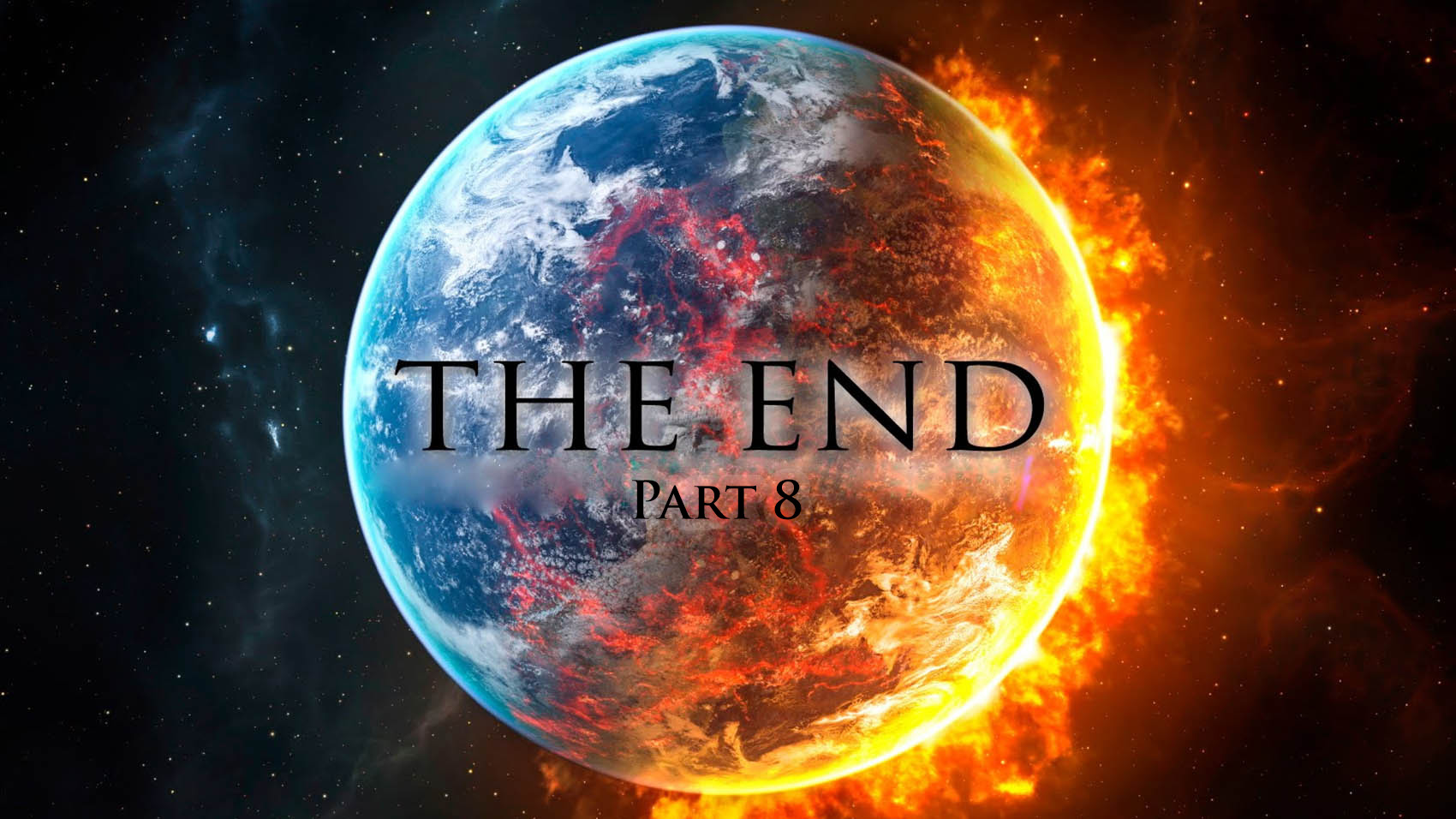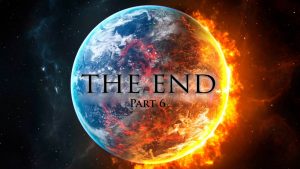
Now we come to the last of the positions that we will cover in this series before we get into some deeper study!
Preterism.
While not technically a belief about the millennium, preterism is more a framework used to understand the prophecy related to the end times. There are two different flavors of preterism, partial and full, and only partial is acceptable within Christianity. In short, partial preterists believe that many of the biblical prophecies have already been fulfilled, and many of these fulfilled prophecies center around the destruction of the temple in 70 A.D. Full preterists believe that all biblical prophecy has already been fulfilled, including the second coming of Christ and the resurrection of believers.
Again from Barry Cooper at Ligonier:
Partial preterism says that prophecies in Daniel, Matthew chapter 24, and Revelation (setting aside the last three chapters) have already been fulfilled. They believe that those prophecies played themselves out in the first century AD, specifically in AD 70 when the Romans destroyed the temple in Jerusalem. What we have in Revelation, therefore, isn’t a symbolic picture of things yet to be fulfilled; it’s a symbolic picture of upheavals and conflicts that happened in the first century. To give one concrete example, “the beast” spoken of in Revelation was Emperor Nero.
and
The full preterist, by contrast, believes that all these things have already taken place. The resurrection of the living and the dead has already happened, and there is no future physical second coming of Christ, because that too has already happened.
One theologian sums up the full preterist position like this: “The coming of Christ in judgment was fulfilled in the destruction of Jerusalem in AD 70, Satan and Antichrist have [already] been thrown into the lake of fire, the kingdom of God has arrived, the resurrection is understood in spiritual terms, the Great Commission has been fulfilled, all things have been made new (the old heaven and earth have passed away; the new heaven and earth have come), the promised restoration has arrived, and the world now continues as it is ad infinitum.”
Preterists generally base their view on these words of Jesus which close out the Olivet Discourse:
You blind guides, straining out a gnat and swallowing a camel! (Matthew 23:24 ESV)
Partial preterists, though they believe that much of biblical prophecy has already been fulfilled, still hold to the historic creeds of the church and the teaching of Scripture that Christ’s return for His church, the resurrection of the dead, the final judgment, and the creation of a new heaven and earth are all still future events.
Most Partial Preterists also believe the term Last Days refers not to the last days of planet Earth or the last days of humankind, but rather to the last days of the Mosaic covenant which God had exclusively with national Israel until the year AD 70. As God came in judgment upon various nations in the Old Testament, Christ also came in judgment against those in Israel who rejected him. These last days, however, are to be distinguished from the “last day,” which is considered still future and entails the Second Coming of Jesus, the Resurrection of the righteous and unrighteous dead physically from the grave in like-manner to Jesus’ physical resurrection, the Final judgment, and the creation of a literal (rather than covenantal) New Heavens and a New Earth, free from the curse of sin and death which was brought about by the Fall of Adam and Eve.[1]
Partial preterism, though orthodox, is not a common view within Christianity, though there are partial preterists among all millennial views. In Part 3, I said that almost all Christians hold to some partial preterist ideas, but that’s not technically correct. Partial preterism is a particular understanding of prophecy that would say that most biblical prophecy was fulfilled in 70 A.D. A more correct thing to say would be that most Christians hold to some form of historist understanding, meaning that biblical prophecy has been fulfilled all throughout the history of humanity and specifically the church. It wouldn’t restrict any prophetic fulfillment only to the destruction of the temple in 70 A.D., though prophecy about that would have certainly been fulfilled there.
Full preterists, however, believe that all of biblical prophecy concerning Jesus was fulfilled with the destruction of Jerusalem, including the resurrection of the dead and the second coming of Christ.
Full Preterism holds that Jesus’ Second Coming is to be viewed not as a future-to-us bodily return, but rather a “return” manifested by the physical destruction of Jerusalem and her Temple in AD 70 by foreign armies in a manner similar to various Old Testament descriptions of God coming to destroy other nations in righteous judgment. Full Preterism also holds that the Resurrection of the dead did not entail the raising of the physical body, but rather the resurrection of the soul from the “place of the dead,” known as Sheol (Hebrew) or Hades (Greek). As such, the righteous dead obtained a spiritual and substantial body for use in the heavenly realm, and the unrighteous dead were cast into the Lake of Fire. Some Full Preterists believe this judgment is ongoing and takes effect upon the death of each individual (Hebrews 9:27). The New Heavens and the New Earth are also equated with the fulfillment of the Law in AD 70 and are to be viewed in the same manner by which a Christian is considered a “new creation” upon his or her conversion.[2]
So, while the partial preterist holds the “already” and “not yet” aspects of the Kingdom of God in tension, the full preterist denies the “not yet” aspect of the Kingdom of God.
There are obviously many objections to this position, with the most common relating to Christ’s second coming:
And when he had said these things, as they were looking on, he was lifted up, and a cloud took him out of their sight. 10And while they were gazing into heaven as he went, behold, two men stood by them in white robes, 11and said, “Men of Galilee, why do you stand looking into heaven? This Jesus, who was taken up from you into heaven, will come in the same way as you saw him go into heaven.” (Acts 1:9–11 ESV)
For as the lightning comes from the east and shines as far as the west, so will be the coming of the Son of Man. 28Wherever the corpse is, there the vultures will gather. 29“Immediately after the tribulation of those days the sun will be darkened, and the moon will not give its light, and the stars will fall from heaven, and the powers of the heavens will be shaken. 30Then will appear in heaven the sign of the Son of Man, and then all the tribes of the earth will mourn, and they will see the Son of Man coming on the clouds of heaven with power and great glory. 31And he will send out his angels with a loud trumpet call, and they will gather his elect from the four winds, from one end of heaven to the other. (Matthew 24:27–31 ESV)
Then I saw heaven opened, and behold, a white horse! The one sitting on it is called Faithful and True, and in righteousness he judges and makes war. 12His eyes are like a flame of fire, and on his head are many diadems, and he has a name written that no one knows but himself. 13He is clothed in a robe dipped in blood, and the name by which he is called is The Word of God. 14And the armies of heaven, arrayed in fine linen, white and pure, were following him on white horses. (Revelation 19:11–14 ESV)
This is why I would say that full preterism is not a Christian position, and cannot be logically held by professing Christians.
With all that in mind, that the second coming will be impossible to miss, where Jesus returns with all of His saints to judge the nations, it is hard to see how everything, including that, was fulfilled in 70 A.D.
[1] Theopedia, Preterism (http://www.theopedia.com/Preterism)
[2] ibid.





